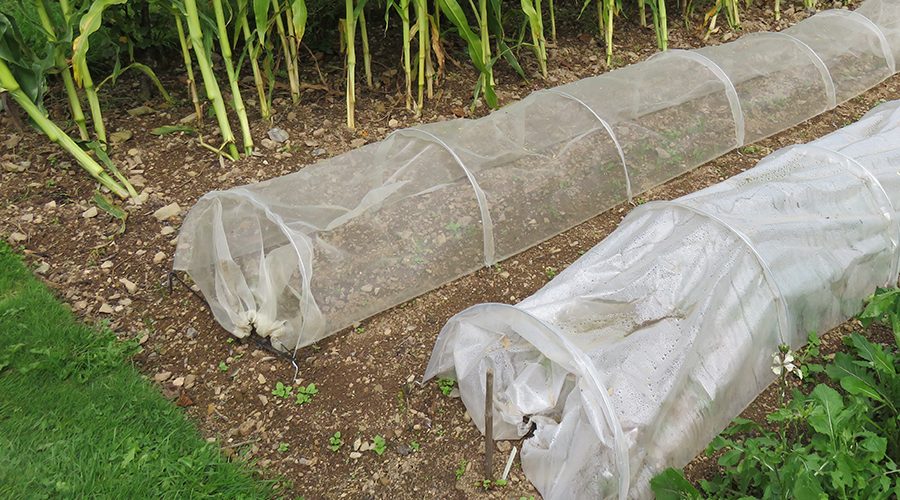We thought we’d feature this article now so that you can start gathering any bits and bobs you may need ahead of planting later on in spring.
We’re looking at three types of crop protection – clear polythene, horticultural fleece and mesh netting. All three are designed to cover your crops, and in doing so will offer some protection from pests, wind, frost and will help keep your plants warmer.
A word on plastic – all these materials are plastic based, so if you are making an investment, we would really advise looking after it as best you can so that you can re-use each season. There are a few non-plastic alternatives, but we have yet to test them out and would not like to critique them until we’ve used them ourselves!
Clear Polythene
Pros:
- Great at protecting from most pests
- Will help warm the temperatures for your crops – great therefore for heat-loving crops like tomatoes, chillies and aubergines.
- Great for early spring to provide warmth and protect from frost
- Very wind-proof, as long as it’s secured down well!
Cons:
- Can get too hot for some veggies, especially in summer
- If it’s not well secured, the wind will rip it to shreds fairly easily
- A bit annoying when it comes to harvesting
- Does not allow rainwater through so it can be a bit annoying for watering – fine if you have a drip hose system set up though
Best used for:
- Creating a mini polytunnel for tender crops – for this, we would recommend setting up hoops and attaching the edges of the polythene to wooden planks. This will make it easier to raise one side, or prop it up to allow a little air to circulate on particularly hot days.
Horticultural Fleece
Pros:
- Really lightweight so you can simply lay it on the top of plants, or prop it up with low hoops (which is a better option for areas of heavy frost/snow)
- An easy barrier to pests, especially for tiny pests like carrot root fly and flea beetle.
- Great for early spring to provide warmth and protection from wind
- Rainwater can get through so it’s easy for watering
- Easy for harvesting
Cons:
- Can get too hot for some veggies in summer
- Rips and snags quite easily
- Not great for higher hoops, as the wind will get underneath and blow it around.
Best used for:
- Low hoops to protect crops at the start of spring when frosts are still a risk
- Laying over crops for protection from flea beetle/carrot root fly
- Laying on top of crops without support, for emergency protection!
Mesh Netting
Pros:
- Great at protecting from most pests
- It’s pretty sturdy so should last several seasons
- You can quite easily use a sewing machine to patch it up if any holes appear
- Water gets through easily
- Not too hot, so great for covering crops in the heat of summer
Cons:
- Gets quite grubby after a couple of seasons and is not quick/easy to clean
- Quite heavy so not ideal for laying directly on plants for longer than a few days
Best used for:
- Covering brassicas – protection from pigeons/rabbits/butterflies
- Covering any crops, supported on hoops
- Summer/Autumn growing

